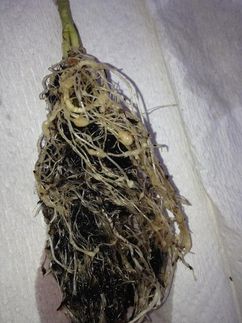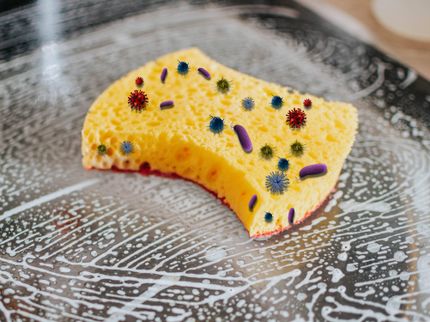Key to virulence protein entry into host cells discovered
Advertisement
Researchers from the Virginia Bioinformatics Institute (VBI) at Virginia Tech have identified the region of a large family of virulence proteins in oomycete plant pathogens that enables the proteins to enter the cells of their hosts. The protein region contains the amino acid sequence motifs RXLR and dEER and has the ability to carry the virulence proteins across the membrane surrounding plant cells without any additional machinery from the pathogen. Once inside the plant cell, the proteins suppress the immune system of the plant allowing the infection to progress. The work, which focused on the virulence protein Avr1b from the soybean plant pathogen Phytophthora sojae, is published in the The Plant Cell.
Oomycetes are fungal-like organisms related to marine algae that cause tens of billions of dollars of losses to agriculture, forestry and natural ecosystems every year. The oomycete Phytophthora infestans caused the Irish potato famine in the nineteenth century. Another Phytophthora species, P. ramorum, is causing Sudden Oak Death disease in California's coastal forests. P. sojae results in $200-300 million in annual losses for commercial soybean farmers in the United States and estimated annual soybean losses of $1-2 billion worldwide. All of these oomycete species contain hundreds of genes that encode for virulence proteins that have the RXLR-dEER region.
The virulence proteins, including Avr1b, enter the soybean host where they are capable of suppressing an important process in plant immunity called programmed cell death. By preventing this protective mechanism in the host, the virulence proteins ensure that the pathogen can establish an unassailable foothold in the plant tissue from which the pathogen can pursue its destructive path.
Postdoctoral fellow Dr. Daolong Dou, the lead author of the article, commented: "We have suspected for a long time that these virulence proteins had some way of slipping inside plant cells to suppress immunity. Our findings finally nail down that mechanism and enable us to focus on how to block the entry mechanism."
The researchers also demonstrated that the RXLR and dEER motifs could be replaced by similar targeting sequences found in effector proteins produced by the malarial parasite Plasmodium. This hints that the targets of the effectors in the soybean and human hosts may be very ancient.
VBI Professor Brett Tyler remarked: "The finding that virulence proteins from oomycetes and the malaria parasite Plasmodium use the same entry mechanism means that we may be able to use the same or similar drugs to block infection by both groups of pathogens. This type of approach may also be relevant to other groups of pathogens, such as fungi, which we also suspect of slipping virulence proteins into host cells."
The breakthrough was enabled by an ingenious device for introducing DNA into living tissues invented by a Virginia Tech undergraduate, Shiv Kale. Kale, who has subsequently joined Dr. Tyler's research team as a graduate student, remarked: "The double-barreled Gene Gun enabled us to make much more accurate measurements of the Avr1b protein than were previously possible, which made it practicable to measure the action of the RXLR and dEER motifs."
Original publication: Daolong D, Kale SD, Wang X, Jiang RHY, Bruce NA, Arredondo FD, Zhang X, Tyler BM; "RXLR-mediated entry of Phytophthora sojae effector Avr1b into soybean cells does not require pathogen-encoded machinery."; The Plant Cell 2008.


























































